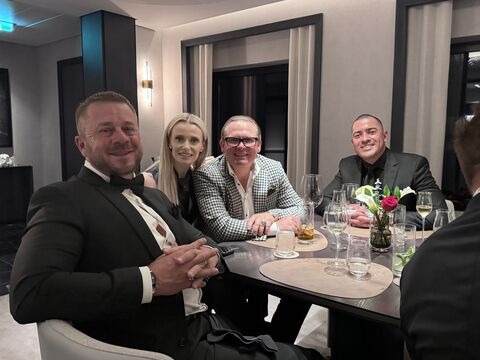
I learned leadership in a place where adrenaline is cheap and coordination is priceless. On the engine, speed comes from choreography: everyone knows the first move, the hazards, and the handoff before the rig stops rolling. That rhythm translates directly to how we build doors and how we sell them. We start every morning with an eight-minute stand-up. Three questions, same order, no speeches: What did you finish yesterday? What will you finish today? What’s in your way? If a blocker pops up—CAD waiting on a dimension, a quote waiting on a finish—we assign an owner on the spot and put a timestamp on the fix. People leave with a plan, not motivation.
“Clarity beats charisma” shows up in our definitions of done. Discovery isn’t “good conversation.” It’s a short list of specifics captured in the CRM before anyone moves the deal: rough opening width/height/depth, wall type, floor slope notes, intended load (books, dry goods, tools), hinge handing, swing direction, and a phone photo of the opening with a tape in frame. If one of those is missing, the stage doesn’t advance. The same discipline applies to the next steps. A fit-check call is complete when the customer confirms those numbers back to us and sends the photo set. Design-price is complete when the buyer has a single-page quote with: price band, lead-time window, install duration, what’s included, what’s excluded, and the date/time of the next milestone. No one says “We’ll circle back.” We schedule the next move while we’re on the call.
We run sales like a crew, so our service-level promises are simple and visible: respond to new inquiries within two business hours, send a written ballpark within 24 hours, send a dimensioned sketch or annotated photo within 48, and—after deposit—lock an install window within 72. If we can’t hit a promise, we call before the clock runs out and reset it with a real reason and a new time. Email is a receipt; the conversation is the commitment.
The handoff from sales to operations is where most companies leak trust. Our handoff is a “job packet” that ops can build from without phoning a friend: the customer’s verified measurements, the dimensioned sketch, material code and finish, hinge handing and swing, site photos (close and wide), install conditions (baseboard returns, threshold height, nearest power, stair/turn notes), and any HOA or permit requirements. Sales doesn’t “throw it over the wall.” We book a ten-minute live handoff with the project coordinator and close the loop on anything fuzzy. If ops asks a question during the call, sales answers it during the call.
When something slips, we change the work, not just the wording. A while back, installs were stalling at the door because site photos were pretty but useless. We wrote a “fit-check photo set” instruction we text before the call: one photo straight on with a tape measure across width, one showing height, one floor close-up with the tape on the slope, one wide for the swing path. Compliance jumped immediately, install surprises dropped, and the phone got quieter for the right reasons. Same play in the funnel: demo calls used to drift into show-and-tell. We tightened the path to four beats—goal, constraints, proof, next step—and built a 90-second micro-demo that shows the hinge motion, shelf loading, and reveal close-ups. The call ends with a scheduled fit-check, not a “let us know.”
Hiring fits the same pattern. I don’t screen for pedigree. I screen for rhythm and follow-through. In interviews I ask candidates to sketch where they want to be in ten years—personal, professional, financial—and we price it. If the math and effort don’t match, we say it now. People deserve that honesty up front. Inside the team, we coach to the moments that actually break: the first question on discovery, the way we ask for the photo set, the sentence that sets a lead-time expectation without hedging. Reps practice those moments like operators practice the cuts that cause most defects. It’s repetitive by design; you don’t improvise at the hinge or in a high-stakes call.
Recovery is quiet and fast. After a miss, we run a brief after-action: what we expected, what happened, what we’ll change, and who owns it. Then we change a checklist, an asset, or a promise. If a meeting doesn’t result in one of those three, we don’t run that meeting again. The measure of a leader isn’t the pep talk; it’s the friction they removed by Friday.
None of this is glamorous, but it’s the difference between a business that hopes and a business that ships. Clear promises. Clean handoffs. Small, daily, boring wins that compound. Keep your word on the next cut and the next call, and the big numbers take care of themselves more often than you think. Calm beats chaos—and calm sells.